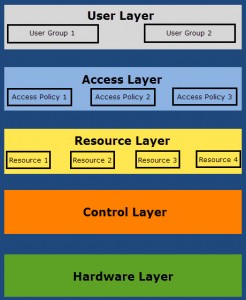As most in the Citrix world know, Citrix has unified the platform architecture for Citrix XenDesktop and XenApp. Now published applications and virtual desktops will be using the new FlexCast Management Architecture (FMA).
There are five layers to the FMA architecture. It is a key to think of/sizing/designing these layers separately.The one layer at a time approach helps simplify the design/deployment process. At a high level these 5 layers are:
– The User Layer.
This layer focus is on logistics of user groups, such as client software, type of end point and location.
– Client Receiver client. This is a client based software download on the user end point to access business applications hosted in the Data Center. It can run on almost any device and operating system such as Windows, Mac, Linux, iOS and Android.
– Citrix Receiver. This provides the ability to secure, optimize and transport the data the endpoint/host utilizing Citrix HDX.
– Endpoints. These are the type of devices the users will use (Thick Clients, Thin clients, Zero clients, Tablets, Smartphones).
– Location. Where will the users connect from (LAN, WAN, Unsecured networks, etc)
– The access Layer
This layer defines how users authenticate to gain access to their resources, secure their communications with the resource layer and deliver applications to the users end points.
There are two infrastructure components that provide access to resources:
– StoreFront
– NetScaler Gateway
– The Resource Layer
Resource here refers to the Desktops and Applications you intend to deliver to the end user.the desktops and applications. You have four main deliver models of applications to users:
1) Hosted on a Server and delivered as a Desktop.
2) Hosted on a Server and delivered as an Application.
3) Hosted on a Desktop and delivered as a Desktop.
4) Hosted on a Server and delivered as an Application.
– The Control Layer
The purpose of the control layer is to provide servers/devices to support the user layers. This layer includes the required components needed to run the infrastructure:
1) Access Controllers (Storefront NetScaler)
2) Desktop Controllers (XenDesktop)
3) Infrastructure Controllers (Database Servers, License Servers)
– The Hardware Layer
This is the physical layer that is responsible for the support of the XenDesktop solution. The hardware falls under two groups: one to support the Access and Control Layers and the other to support the Resource Layer. The main hardware components to consider are servers and storage.
This is just a brief description of the 5 layers and other posts planned to discuss each layer in greater details.
Thank you for reading.
Nick






